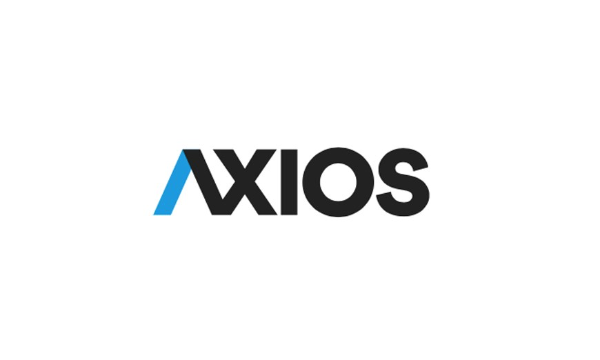/Green%20hydrogen%20by%20Scharfsinn%20via%20Shutterstock.jpg)
Plug Power (PLUG) has been navigating challenging waters throughout 2025, with the stock tumbling amid regulatory hurdles and liquidity concerns. However, Chief Financial Officer Paul Middleton recently made headlines by substantially increasing his stake in the company. Middleton’s latest purchase of 650,000 shares of PLUG stock follows an earlier insider buy, signaling a clear vote of confidence from one of the company’s top executives. The timing of this insider purchase is particularly noteworthy, coming just after Plug Power requested shareholder approval for a reverse stock split and an increase in authorized shares — moves typically viewed by investors as defensive measures to stabilize the business.
In this article, we’ll examine Middleton’s recent insider activity, dive into Plug Power’s broader operational and financial health, and evaluate whether investors should interpret the CFO’s buying as a compelling signal to follow his lead and purchase PLUG stock — or if caution remains the wiser path forward.
About Plug Power Stock
Valued at a market cap of $1.48 billion, Plug Power (PLUG) is a notable player in the green hydrogen industry, specializing in hydrogen fuel cell technologies. The company is building a comprehensive green hydrogen ecosystem, spanning production, storage, delivery, and energy generation, to support its customers’ business objectives and contribute to economy-wide decarbonization. Its offerings include the GenDrive fuel cell system for material handling vehicles such as forklifts, GenSure stationary fuel cells for grid support, and ProGen fuel cell engines designed for a range of applications. It also offers GenFuel, a comprehensive solution for hydrogen production, storage, and dispensing.
Shares of the ailing hydrogen fuel cell product solutions provider have plunged 37.6% on a year-to-date basis.
CFO Middleton Loads Up on Plug Power Stock Again
On June 9, PLUG stock jumped more than 25% following news that Chief Financial Officer Paul Middleton had acquired an additional 650,000 shares of Plug’s common stock on the open market. However, it’s important to note that part of the stock’s spike is also linked to another development, which we’ll discuss shortly.
Last Monday, Middleton purchased 650,000 shares at an average price of $1.0339 each. This investment comes on the heels of an earlier purchase in mid-May, underscoring Middleton’s confidence in Plug’s operational momentum, including the scaling of hydrogen production facilities, commercialization of GenEco electrolyzers, and rising demand for GenDrive fuel cell solutions in material handling and industrial markets.
“This additional investment reflects my strong conviction in Plug’s strategy and long-term value creation. As we execute and gain market traction, I continue to see meaningful upside and believe Plug remains one of the most compelling growth opportunities in the energy sector,” said Middleton.
The move also follows the company’s recent request for shareholder approval of a reverse stock split and an increase in its authorized share count, as it seeks to remain afloat amid rising U.S. regulatory challenges. “Without an increase in the number of authorized shares... we may be constrained in our ability to address ongoing needs and pursue opportunities,” Plug warned in a letter to investors.
Plug Power Wins a Big Deal in Uzbekistan
Also on June 9, Plug Power announced a significant expansion of its partnership with Allied Green Ammonia. The company secured a deal to provide 2 gigawatts (GWs) of its proton exchange membrane (PEM) electrolyzers for a sustainable fuels project in Uzbekistan. Plug’s electrolyzer technology will serve as the backbone of a new $5.5 billion green chemical production facility in Uzbekistan, which will produce sustainable aviation fuel, green urea (a fertilizer), and green diesel.
The project, supported by the government of Uzbekistan, extends Plug’s ongoing collaboration with Allied Green. In January, Plug Power agreed to supply 3 gigawatts of electrolyzers for Allied’s flagship green ammonia facility in Australia. However, I wasn’t impressed with the timeline, as the company now aims to reach a final investment decision (FID) for the project in the fourth quarter — later than its original expectation of making a positive FID in the second quarter. Moreover, Plug intends to begin manufacturing and delivering its PEM electrolyzers for the project in 2027.
While the news provided a modest boost to investor sentiment, it did little to ease concerns about the company’s core issues.
Plug Faces Continued Pressure from U.S. Regulatory Challenges
In late May, the Department of Energy (DOE) announced $3.7 billion in funding cuts for clean energy and climate programs, with a large portion of the canceled grants focused on carbon capture and sequestration projects. Although Plug Power wasn’t directly impacted, the move has sparked broader concerns for the company. In early January, Plug secured a nearly $1.7 billion loan guarantee from the DOE to support six zero- and low-carbon hydrogen production projects, but President Donald Trump’s administration has since placed the loan under review, effectively putting it on hold. The recent developments raise the chances of the funding being revoked, which could further delay Plug’s path to profitability.
An even greater threat stems from Trump’s tax and spending bill, which includes a provision to eliminate the generous 45V clean hydrogen production tax credit. The legislation proposes ending 45V eligibility for hydrogen projects starting construction after Dec. 31, 2025, effectively undermining its long-term and wide-reaching impact. This poses a serious threat to Plug’s business plan, which depends on building a nationwide network of green hydrogen plants. Without new plants and the support of related production tax credits, the company’s hydrogen fueling business is likely to keep incurring substantial losses for the foreseeable future. The tax bill is currently being reviewed in the Senate, with a vote on its approval expected by August.
How Did Plug Power Perform in Q1?
On May 12, Plug Power reported its earnings results for the first quarter of 2025. The company’s revenue rose 11.1% year-over-year to $133.7 million, matching its guidance and surpassing Wall Street’s consensus estimate by $1.88 million. The growth was fueled by higher electrolyzer deliveries, sustained demand in material handling, and continued deployments within its cryogenic platform.
Another highlight in Q1 was the company’s achievement of key production milestones, expanding its hydrogen production capacity to 40 tons per day across three active plants. The momentum seemed to carry into Q2, with the company recently reporting that its Woodbine, Georgia, hydrogen plant produced 300 metric tons of liquid hydrogen in April, marking the facility’s highest monthly output to date.
On the profitability front, we got a mixed picture. PLUG’s first-quarter gross margin loss narrowed to -55% from -132% in the same quarter last year, driven by ongoing supply chain optimization, continued cost-cutting efforts, price increases, and progress in scaling its hydrogen platform. At the same time, during the earnings call, management adjusted its previous forecast of achieving positive gross margins in Q4 2025 and is now targeting breakeven by year-end. The company posted net loss per share of $0.21, missing expectations by $0.02.
Now, let’s move on to another core issue, which is liquidity. As of March 31, Plug had $295.8 million in cash and cash equivalents, along with $196 million in restricted cash. An additional $584.7 million in restricted cash is recorded as a long-term asset, linked to a sale-leaseback transaction. The key point here is that the company had only $295.8 million in unrestricted cash on hand. After the quarter ended, Plug secured an expensive debt facility of up to $525 million from its existing lender, Yorkville Advisors. When it comes to cash burn, although it decreased by 50% year-over-year to $152.1 million in Q1, it remains substantial in absolute terms. In summary, it appears the company has sufficient cash to fund its operations through the remainder of the year. However, the outlook for next year remains uncertain, and with regulatory challenges persisting, PLUG stock is likely to remain under pressure, limiting its funding options, particularly its ability to raise capital through additional equity offerings.
Looking ahead, management expects Q2 revenue to fall between $140 million and $180 million, with continued improvements in gross margin and working capital performance projected for the remainder of 2025.
Analysts tracking the company expect its net loss to narrow by 78.19% year-over-year to $0.58 per share for fiscal 2025, while revenue is estimated to rise 16.69% year-over-year to $733.76 million. Meanwhile, current projections suggest that PLUG is unlikely to reach profitability before fiscal 2030. However, without the hydrogen production tax credit, the company’s path to profitability will likely face further delays.
What Do Analysts Expect for PLUG Stock?
Wall Street analysts maintain a cautious stance on Plug Power stock, reflected in the consensus “Hold” rating. Of the 23 analysts covering the stock, six rate it a “Strong Buy,” 13 recommend holding, and the remaining four hold a more bearish view with a “Strong Sell” rating. Still, the average price target for PLUG stock stands at $1.96, suggesting 50% upside potential from current levels.
The Bottom Line on PLUG Stock
Putting it all together, my view hasn’t changed since CFO Middleton’s initial insider purchase — I don’t believe investors should follow his lead and buy PLUG stock. While the recent insider purchase and the expanded partnership with Allied Green Ammonia offered some optimism, it’s important to note that they don’t significantly alter the overall picture, as the company still faces major regulatory challenges. Unless there’s positive news on that front, I don’t see any reason to buy PLUG stock.
Moreover, PLUG’s price action suggests that the recent optimism may be fading, as the stock failed to break through the key resistance at a round-number level of $1.50 and formed three long-wick candles on the daily chart — an early signal of weakening momentum and a potential pullback.
On the date of publication, Oleksandr Pylypenko did not have (either directly or indirectly) positions in any of the securities mentioned in this article. All information and data in this article is solely for informational purposes. For more information please view the Barchart Disclosure Policy here.






